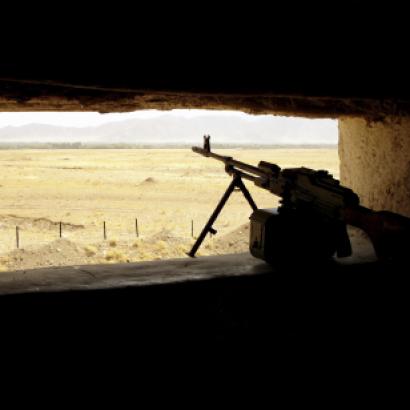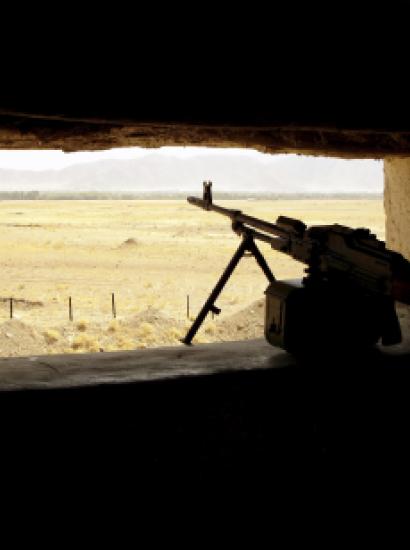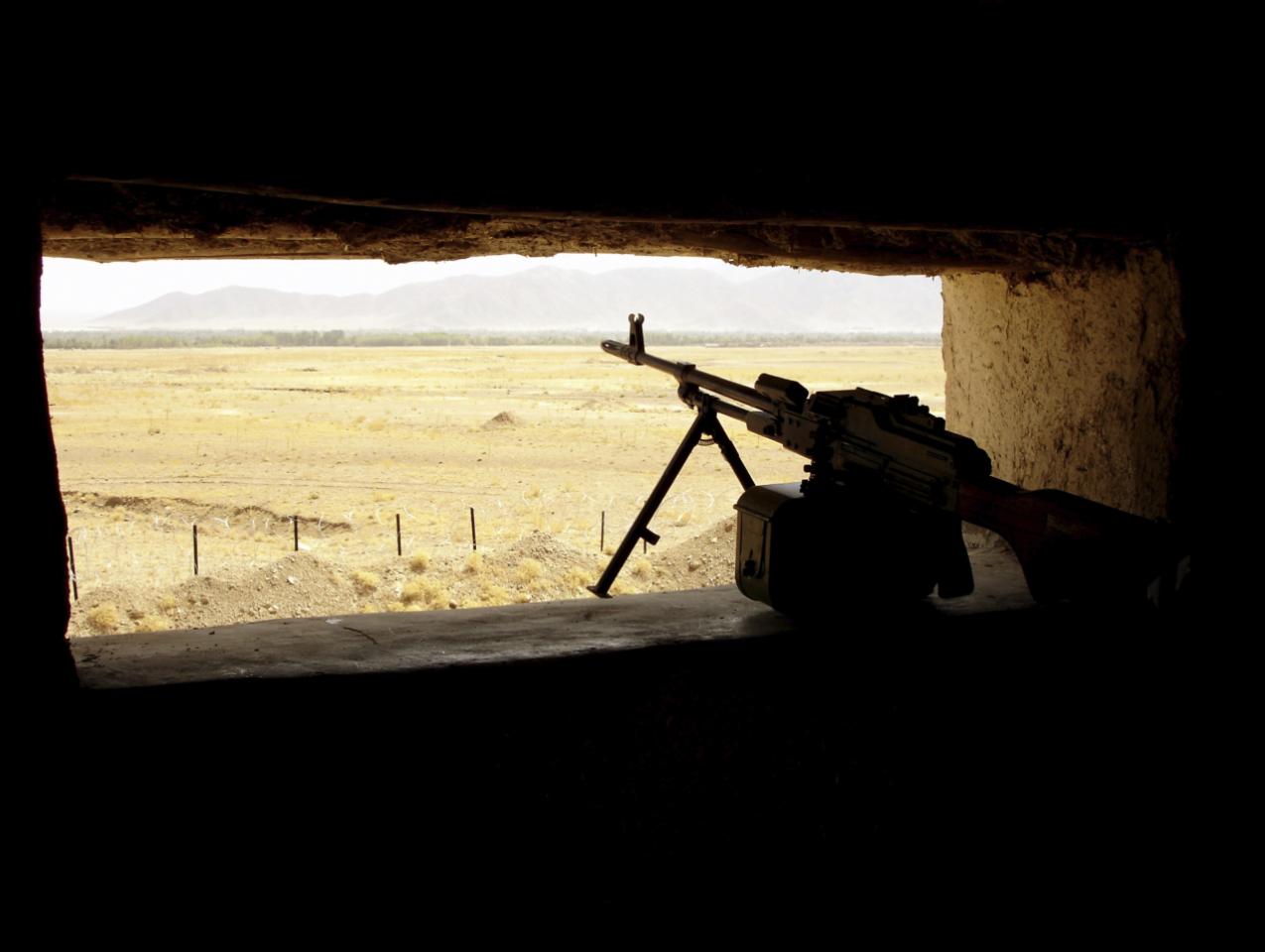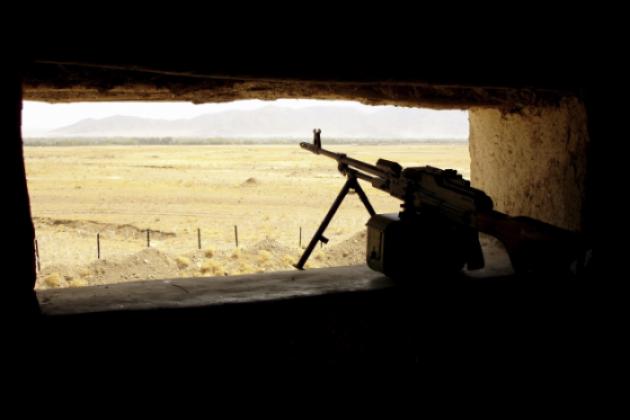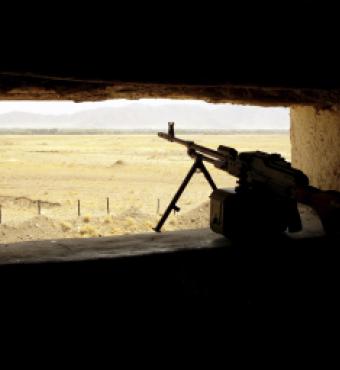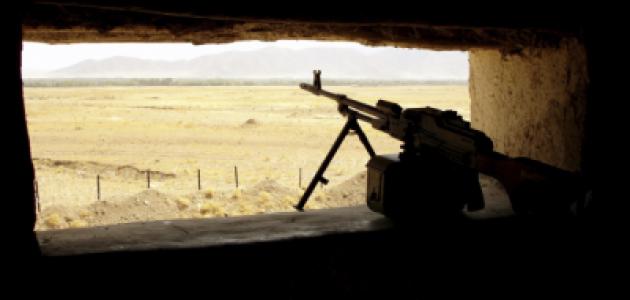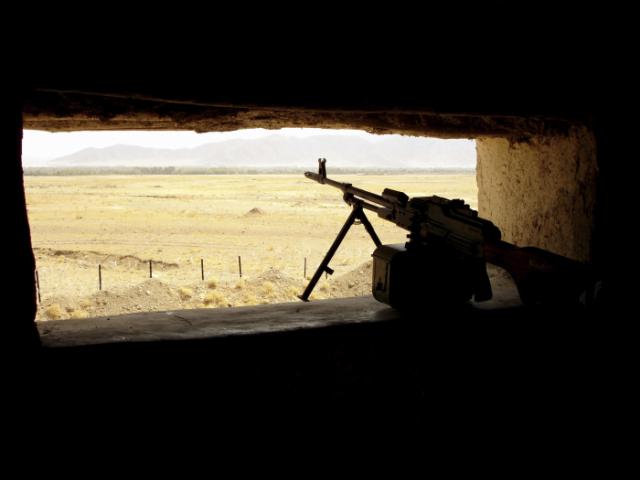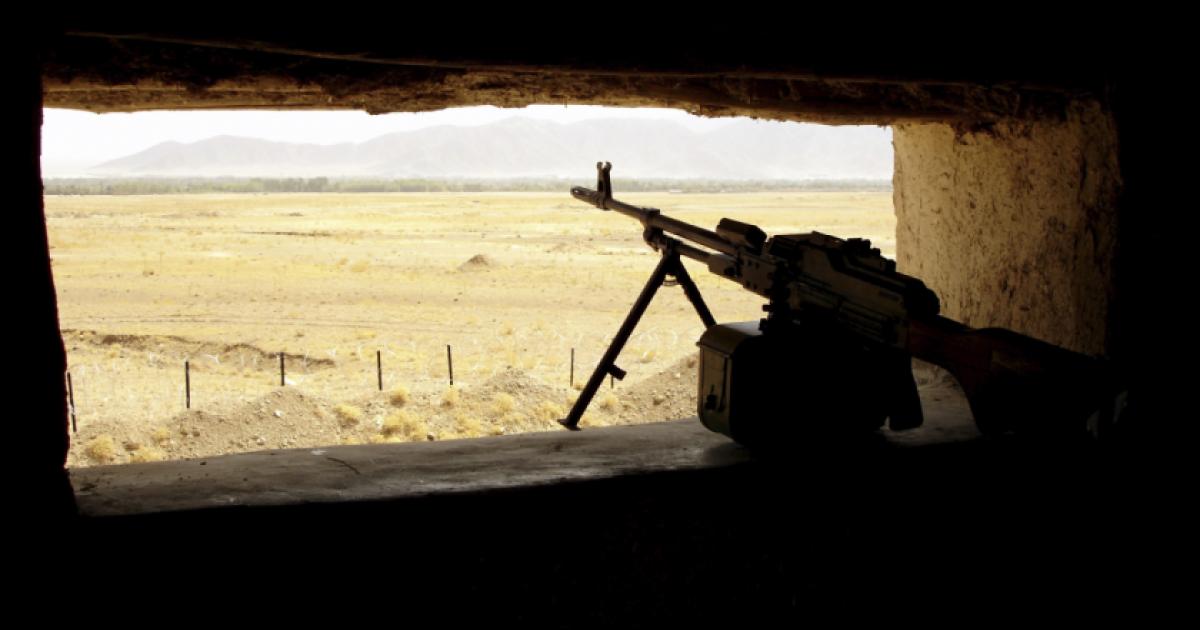- Security & Defense
- US Defense
- International Affairs
- US Foreign Policy
- History
- Military
Anybody who follows foreign affairs and social media has likely seen some version of a chart entitled “A Guide to the Middle East Relationships.” The graphic shows a hopelessly tangled web of arrows illustrating the often contradictory strategic associations in the region, i.e. the United States and Iran support opposing sides in the Syrian civil war while fighting on the same side in Iraq against the Islamic State (ISIS); Turkey opposes Bashar Assad’s regime yet attacks the Kurdish militias fighting his army; Saudi Arabia and Qatar both support Syria’s Sunni rebels yet hold diametrically opposing views on Egypt and the Muslim Brotherhood, et cetera.
While the chaotic graphic conveys a sense of irony, the underlying events that inspired it lie closer to tragedy. Hundreds of thousands of civilians have been killed and millions more displaced by civil wars in Syria, Iraq, and Yemen; ISIS’s proto-state has committed unspeakable atrocities in the region while simultaneously expanding its terrorist activities in the West; and Iran’s nuclear program has been legitimized even as Tehran seeks to further, and exploit, the region’s destabilization. Meanwhile, U.S. Middle East strategy appears to have become trapped in a downward spiral reacting to the latest disastrous headlines emanating from the region.
One way for U.S. policymakers to maintain their strategic bearings amidst the current maelstrom is to simplify the problem by returning to first principles. Specifically, there are two vital interests in the region that should inform U.S. strategy: First, since 1948, when George Kennan included the Middle East amongst “those areas of the world which . . . we cannot permit . . . to fall into hands hostile to us,” U.S. policymakers have sought to prevent another power from disrupting the free flow of the region’s energy resources that underpin the Western economic order. This has meant deterring and sometimes combatting aspiring regional hegemons, whether the Soviet Union, revolutionary Iran, or Saddam Hussein’s Iraq. Although the fracking revolution reduces American dependence, our trading partners still rely upon Middle Eastern oil, and without this supply potential adversaries such as Russia would gain increased influence over world events.
Second, America seeks to counter extremist movements originating in the Middle East that target U.S. citizens at home and abroad. Although there have been radically violent interpretations of Islam dating back to the 7th Century Kharijites – who believed all non-Muslims were inherently enemies and assassinated the Umayyad Caliph, Muhammed’s son-in-law Ali, because they deemed him to be an apostate – , before 1979 such movements were generally confined within the region. Now both Tehran and various Salafist jihadist groups – including al-Qa’ida and ISIS – employ terrorism against Western targets in pursuit of their ultimate objective of reestablishing the Islamic Caliphate.
Virtually every other important U.S. interest in the region derives from these two overarching objectives. Whereas preventing weapons of mass destruction (WMD) proliferation in the region is an important policy goal, WMDs themselves are not the problem. America does not object to Israel's nuclear program, yet such a capability becomes threatening in the case of a revisionist state seeking to dominate the region, or potentially falling into the hands of terrorists intent on killing Americans. Similarly, beyond the moral absolute of preventing genocide, promoting human rights and democracy in the Middle East reduces the grievances that make Muslim populations sympathetic to – or actively supportive of – Islamic terrorist groups. And although many Americans support Israel for reasons stemming entirely from identity or ideology, this support also strengthens our vital interests in the Middle East: guaranteeing Israel’s qualitative military edge deters other states from obtaining military capabilities that would enable them to threaten regional stability, and not pushing Israel into unbalanced diplomatic agreements prevents extremists like Hezbollah or Hamas from claiming that terrorism works as a negotiating tactic.
Unfortunately, America’s primary strategic interests have suffered significant setbacks of late. The Obama administration has willfully misread Iran's objectives: rather than merely seeking a "rebalance", Tehran has made clear its intention to reclaim its pre-modern status as the Middle East’s dominant power. Its efforts to destabilize the region through support of proxies in Lebanon, Syria, Iraq, Yemen, and Gaza have continued unabated despite – or arguably because of – the 2015 P5+1 nuclear agreement. American strategic interests are further threatened by the reintroduction and legitimization of Russian military intervention in the region. And despite operational successes against al-Qa’ida in the decade following the 9/11 attacks, America’s withdrawal from Iraq and reluctance to fully commit to a clearly defined strategic objective in Syria enabled ISIS to establish a terrorist proto-state from which it has unleashed its terror campaign against the West.
There is, however, a silver lining in this seemingly unremittingly cloudy sky. These rising threats are partly a reflection of U.S. strategic paralysis, so the next Administration will have an opportunity to reinvigorate the defense of these vital interests. To do so, whoever occupies the Oval Office next January 21st must shed two misconceptions. First, the enemy of our enemy is not always our friend. Instead, the threats Iran and ISIS pose to U.S. interests are mutually reinforcing as Salafist jihadist groups exploit Iranian expansion in their recruiting propaganda. Yet just as ISIS was unable to gain traction with Iraq’s Sunnis when U.S. influence kept Baghdad’s worst sectarian instincts in check, countering Iranian destabilization throughout the region will weaken the Salafists’ appeal to vulnerable Sunni populations.
Second, although America can achieve its policy objectives in the near-term, our interests are enduring and will require long-term maintenance. America and its regional allies still enjoy a favorable conventional military balance in the region compared to the rising Iran-Russia axis. This merely needs to be accompanied by greater clarity regarding Tehran (and Moscow)’s intentions and – in the wake of President Obama’s failure to enforce his “redline” on chemical weapons in Syria – the reestablishment of U.S. credibility in the region. Similarly, America and its allies will eventually drive ISIS from its safe heavens. Yet just as “Bin Ladenism” outlived al-Qai’da’s founder, ISIS’s murderous theology will continue to be propagated via social media and the Dark Web long after the Islamic State has been wiped off the map. Policymakers must recognize that although necessary, the reconquest of Mosul and Raqaa will not be sufficient to end the threat that ISIS poses to U.S. interests.
Like a garden, the defense of a country’s national interests requires constant tending and nurturing. The United States successfully prevented a hostile regional hegemon from emerging in the Middle East for over sixty years, and by waging war against al-Qa’ida rather than treating it as a law enforcement effort in the decade after 9/11 dramatically reduced the threat of terrorist attacks against the homeland. Despite recent setbacks, the next Administration can achieve these operational objectives. Even then, however, U.S. leaders must resist the temptation to conflate operational success with strategic victory and remember that just as our interests are eternal, so to must be the efforts to defend them.








